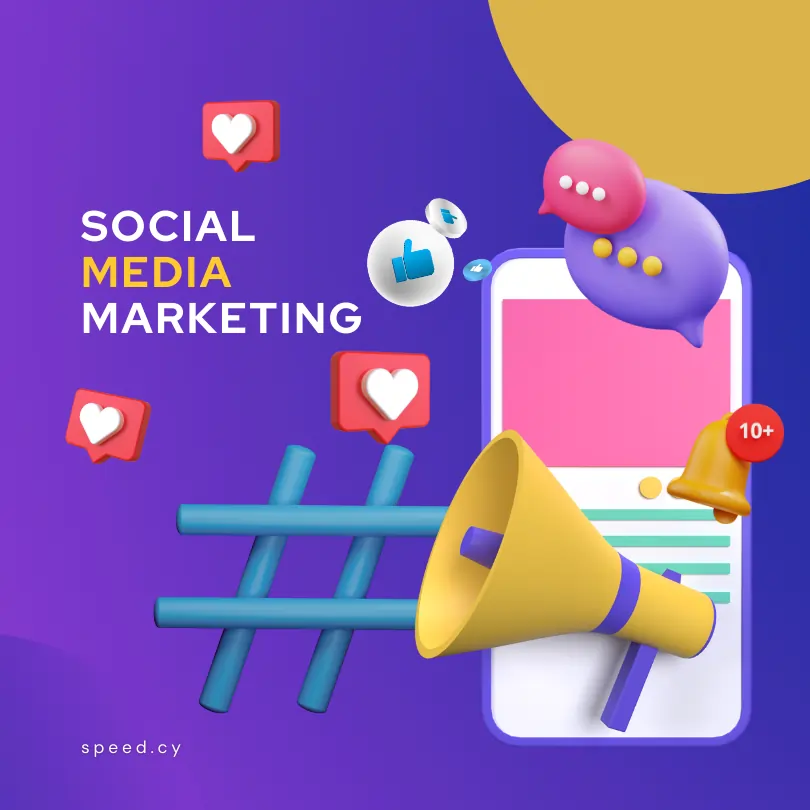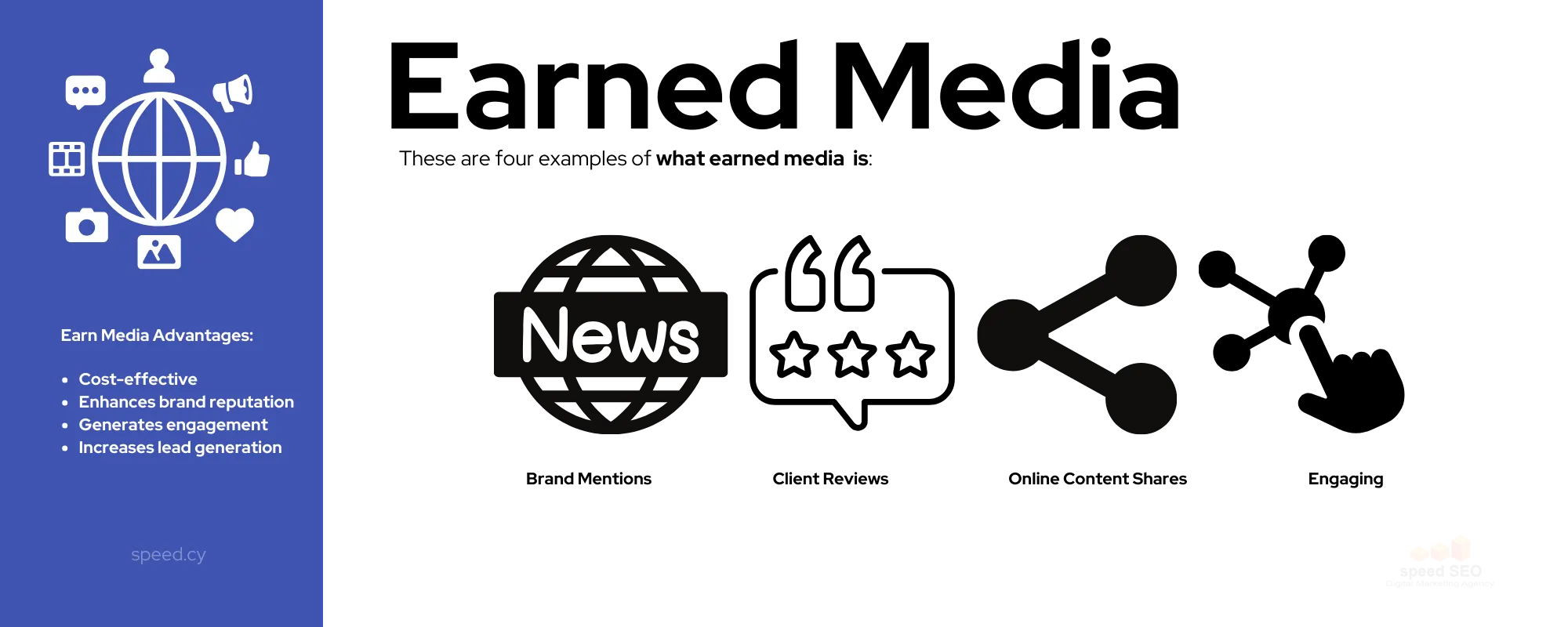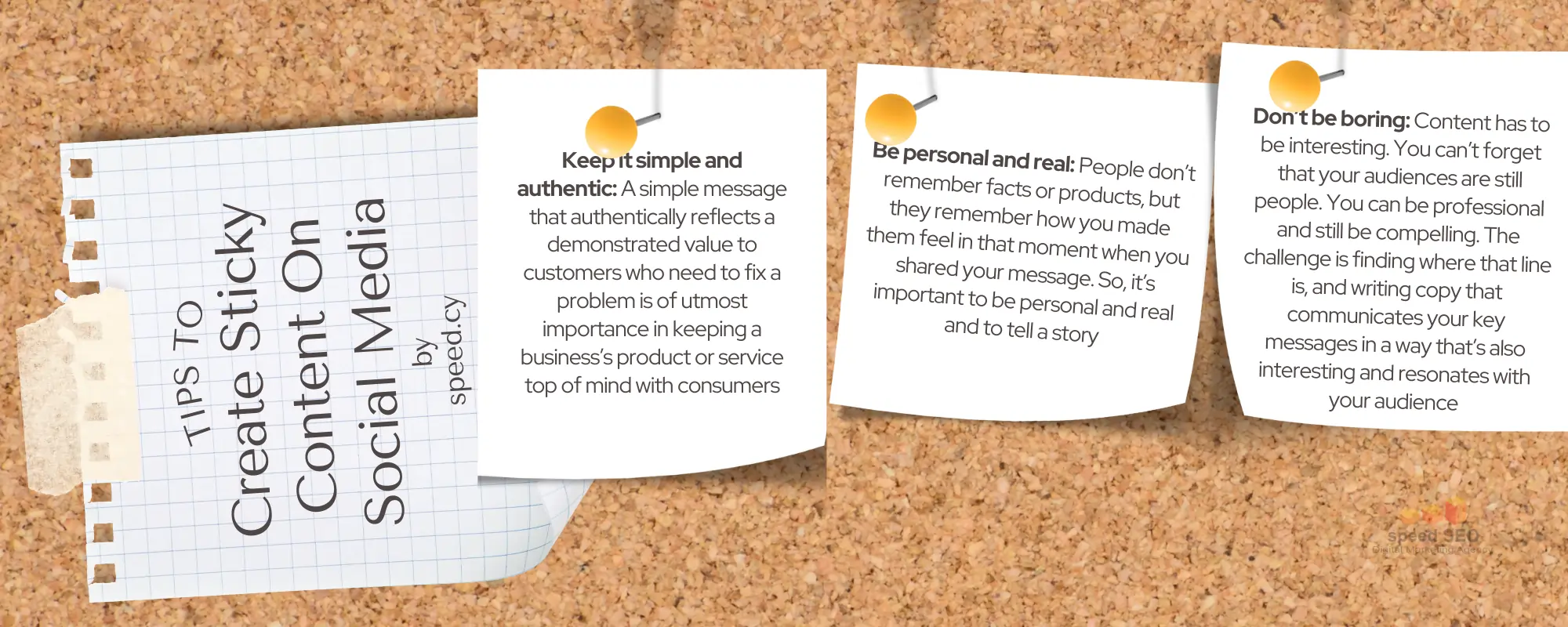
SMM: Navigating the Social Sphere
Social media marketing (SMM) is a strategic approach to harnessing the power of social media platforms to cultivate brand awareness, engage with target audiences, and drive business objectives. It's about building meaningful connections and delivering value to the online community, ultimately propelling brands to greater heights in the ever-evolving digital landscape.
Introduction:
Social media has revolutionized marketing and become an essential tool for businesses of all sizes. With over 4 billion social media users globally, platforms like Facebook, Instagram, and TikTok offer immense opportunities to build brand awareness, engage with customers, and drive sales.
This comprehensive guide will walk you through everything you need to know about social media marketing (SMM) in 2024 – how it works, tips for creating effective campaigns, analyzing performance data, avoiding pitfalls, and the future of SMM. Whether you are new to social media marketing or looking to take your current strategy up a notch, this in-depth resource has actionable insights for your business.
We will break down the elements of a winning social media strategy across popular platforms and show you how to set objectives, identify your target audience, create engaging content optimized for shares and conversions, leverage influencers, run paid ads, and track ROI. Real-world examples and case studies illustrate how companies of all sizes have leveraged SMM to spectacular results.
This guide also tackles the dark side of social media by outlining common mistakes businesses make and how to avoid PR crises. You’ll learn best practices for dealing with negative comments, keeping up with changing algorithms, and competing ethically.
Finally, we’ll give you a peek behind the social media curtain to see where marketing trends are headed next. From live streaming and ephemeral content to visual marketing and more, discover what is on the horizon so you can keep ahead of the competition.
Let’s dive in to fully unlock the potential of social media for your business in 2024 and prepare for even greater success down the road!

What Is Social Media Marketing (SMM)?
Social media marketing (SMM) refers to the process of gaining website traffic or attention through social media sites. Marketers use social media platforms such as Facebook, Twitter, LinkedIn, and Instagram to connect with current and potential customers.
By posting content, interacting, and building relationships, brands can increase awareness and drive site traffic and sales.Social media marketing (SMM) refers to the process of gaining website traffic or attention through social media sites. Marketers use social media platforms such as Facebook, Twitter, LinkedIn, and Instagram to connect with current and potential customers. By posting content, interacting, and building relationships, brands can increase awareness and drive site traffic and sales.
Why Is Social Media Marketing (SMM) So Powerful?
Social media marketing is an extremely effective way for brands to connect with customers for several key reasons:
- Huge reach: Over 4.5 billion people actively use social media worldwide. Tapping into these networks provides marketers access to their target demographic.
- Real-time communication: Social platforms facilitate instant communication between brands and audience. This allows for better customer service and immediate feedback.
- Audience targeting: Detailed audience data and analytics allow marketers to segment their audience and craft content tailored to them.
- Higher conversion rates: Followers on social networks have higher brand loyalty and conversion potential. Social media drives referral traffic to websites.
- Brand personality: Social platforms give brands a way to create a distinct personality and voice. This helps companies better connect with consumers.
How Social Media Marketing (SMM) Works
An effective social media strategy requires planning, resources, and goals. Key aspects include:
- Identifying key social platforms and target demographics. Conduct competitor research.
- Crafting engaging content tailored for each platform’s audience and format.
- Posting content regularly to build a brand presence and stay top of mind.
- Leveraging ads to enhance reach and target specific demographics.
- Building relationships by actively engaging with other accounts through likes, shares, and comments.
- Analyzing performance with built-in analytics to refine strategy.
Executing SMM with clear objectives and optimized content that resonates with its intended audience is key to success. An agile approach allows for adaptation based on data.
SMM Action Plan
An impactful social media marketing strategy requires a streamlined action plan covering key elements:
Research and Set Goals
Conduct thorough research on target demographics and analyze competitors on social platforms. Define KPIs and content strategy goals. Common metrics are audience growth, engagement, reach, website traffic.
Choose Social Platforms
Work with the social platforms that make sense for your brand based on goals, target audience behavior analysis, and competitor benchmarking. Most brands can maximize exposure on leading networks like Facebook, Instagram, Twitter, and LinkedIn.
Create Accounts and Brand Assets
Set up business accounts representing brand identity across selected platforms. Develop branded assets like images, logos, and design templates to maintain visual consistency.
Use Content Calendars
Map out the types of content you will produce, such as social copy, images, video, stories. Plot consistent posting schedules tailored to each platform’s algorithms and audience peak times.
Expand Reach
Leverage paid ads, influencer marketing, and cross-promotions across platform to expand organic reach. contested Hashtags and geo-targeting can help content discovery.
Track and Refine
Use built-in analytics to identify best-performing content and fine-tune strategy. Key metrics to watch are engagement, clicks, conversions, and traffic driven back to your website.
5 Key Takeaways:
- Research target audiences and set metric-driven goals to focus efforts.
- Choose platforms strategically based on audience preferences and competitors.
- Create branded assets for visual consistency across networks.
- Plot a content calendar to organize posting schedules and themes.
- Continually track performance and refine approach accordingly.
Customer Relationship Management (CRM)
A social media marketing strategy must incorporate customer relationship management (CRM) protocols for interacting with followers and monitoring conversations. This facilitates building lasting engaged communities. Best practices include:
- Responding to direct comments and messages in a timely manner with relevant helpful information.
- Seeking feedback through polls and surveys to foster participation.
- Analyzing social data to better understand customers and personalize experiences.
- Monitoring brand mentions for reputation management and crisis communication.
- Streamlining workflows linking social analytics to customer profiles in a CRM system.
Managing customer experiences via thoughtful social listening, engagement, and community building strengthens brand loyalty.
An effective social media presence is built on compelling, creative shareable content. While actively engaging audiences through CRM is crucial, brands must also focus on producing content optimized and worth sharing, aiming to increase brand visibility.
Shareable Content
Content published on social platforms must grab attention and encourage sharing to help it organically spread to expand reach. Tactics to make content more shareable include:
- Creating visually appealing graphics and videos people want to repost.
- Incorporating viral trendsing formats like popular meme templates.
- Optimizing copywriting for specific platforms to spark interest.
- Sharing other relevant accounts’ content and Piggybacking on trending stories.
- Employing geotargeting and hashtags so content surfaces in certain feeds.
Test various formats from lists and polls to infographics and live video. Analyze performance data to double down on what resonates most. Viral content keeps audiences engaged long-term.
Earned Media
In addition to owned media created and shared directly by brands on their social channels, marketers should actively pursue earned media. This refers to content about your brand produced by others that helps amplify awareness and trust. Tactics include:
- Pitching relevant trend stories to journalists and influencers to secure coverage.
- Reposting and engaging with earned media content mentioning brand.
- Building relationships with micro-influencers and brand advocates.
- Promoting user-generated content showcasing happy customers.
- Securing brand mentions in industry roundups or reviews.
Earned social media extends credibility and signals third-party validation. It also diversifies content as audiences perceive it carries more authenticity than branded posts.
Viral Marketing
Viral marketing on social media leverages electronic word-of-mouth to facilitate rapid organic sharing of branded content across networks. This requires creative top-performing content optimized for the platform format. Successful viral content uses tactics like:
- Incorporating entertainment value through humor or surprise elements.
- Featuring inspirational stories that spark an emotional reaction.
- Tapping into latest trending stories, events or Internet subculture.
- Producing snackable visual media people instantly connect with.
- Including customizable elements for audiences to make it their own.
Crafting viral social content provides exponential brand lift as people naturally share with expansive networks.
Customer Segmentation
An insights-driven social approach relies on segmenting target audiences into strategic groups based on demographics, interests, and platform behaviors. This enables tailored content. Categories include:
- Geographic location
- Gender
- Age ranges
- Job roles and industry niches
- Interests like parenting or travel
- Platform preferences and usage patterns
Constant social listening, conversation monitoring, and audience analysis guides effective customer cohort strategies. Meeting the unique needs of each group drives results.
Tracking Metrics
Social Media Marketing
Tracking important
Metrics
To determine the success of social media marketing efforts, brands must implement robust tracking of key performance indicators (KPIs). Monitoring meaningful metrics enables data-backed strategy optimization.
When establishing a measurement framework, first consider core goals and target audience search intent. For example, B2C ecommerce sites may prioritize website traffic, daily active users, and conversions, while B2B content marketers track impression volumes, community growth, and lead generation.
Key metrics to track include:
- Impressions and reach quantify content visibility
- Engagement rates like clicks, comments, shares signal audience interest
- Website traffic measures ability to drive actions
- Sales and conversions tie efforts to revenue
- Sentiment analysis indicates brand perception
- Follower growth tracks community expansion
Leading free analytic tools are Facebook Insights, Twitter Analytics, and Instagram Insights. Third-party services like Sprout Social also provide consolidated reporting. Focus reports on digestible performance snapshots for decision-makers.
To optimize efforts, analyze metrics in a recurring dashboard review process across teams including marketing, content, digital experience, and executive leadership. Identify trends and opportunities in platform-specific, campaign, and creative performance. Conduct competitive benchmarking. Then tailor strategies leveraging successes and addressing underperforming areas.
With consistent tracking and outcome-focused analysis, brands can continually refine social media marketing for maximum impact.
Advantages and Disadvantages of Social Media Marketing (SMM)
Implementing a strategic social media marketing plan can provide immense opportunities for raising brand visibility and engaging customers, however the landscape does present certain challenges. Carefully weighing the pros and cons allows companies to set realistic objectives and mitigate risks.
Advantages
Well-managed SMM presents significant benefits including:
- 👍 Boosted Brand Recognition - Organic and paid social campaigns can rapidly multiply brand touchpoints and expose content to new audiences. This memorability lifts labels from obscurity.
- 👍 Cost-Effective Outreach - Social platforms offer free publishing and relatively affordable promotion tools. Targeted ads can significantly lower customer acquisition costs at scale.
- 👍 Website Traffic & Real-Time Feedback - Social posts and ads can drive high-intent referral traffic to sites and offerings. Comments and messages provide instant customer feedback.
- 👍 Targeted Engagements - Detailed audience segmentation in social campaigns allows personalized and relevant content and experiences that build close customer connections.
While the upsides are substantial, brands must also brace for thorny social media challenges like:
Disadvantages
- 👎Time-Consuming Management - A formidable social presence requires extensive planning, content production, community interaction, and performance analysis. The commitment shouldn’t be underestimated.
- 👎Changing Algorithms & Policy Updates - Frequent social media algorithm shifts and policy amendments might suppress brand visibility if not adequately prepared for. Maintaining relevancy presents a moving target.
- 👎Public Negative Feedback - Social media allows anyone to criticize brands publicly. Proactive reputation management is imperative to avoid PR crises.
- 👎Unclear ROI - Despite best reporting efforts, definitively quantifying the true return on investment of SMM as it relates to sales and growth metrics presents modeling difficulties.
With eyes wide open to both favorable and unfavorable potential outcomes, brands can craft smart highly targeted social plans and set key performance benchmarks.
What is Sticky Content in Social Media Marketing?
Sticky content refers to social media posts and ads that compellingly resonate with audiences in memorable ways. This content marketing strategy focuses on creating shareworthy media that audiences repeatedly revisit and spend meaningful time engaging with.
Tactics include interactive formats like polls and quizzes as well as emotionally-charged stories packaged in snackable posts for the platform. Investing in sticky content pays dividends through recurring organic exposure.
What is Viral Marketing in Social Media Marketing?
Viral marketing means creating bite-sized social content deliberately designed to spark natural sharing across networks.
By tapping into emotional triggers and the latest meme trends, posts can spread contagiously without paid promotion. For example, brands might leverage occasion-based viral trends like the “10 Year Challenge” or piggyback on emerging platforms like TikTok to inspire millions of organic views as fans replicate and riff on ultimately driving brand visibility and affinity.
What is Earned Media in Social Media Marketing?
Earned social media refers to favorable brand mentions, recommendations, reviews, and shares happening organically by unpaid third-parties like journalists, industry experts, influencers, and everyday consumers.
It holds immense credibility as unbiased endorsement. Savvy PR teams actively pitch relevant trend stories or exclusives to targeted media contacts to secure coverage. They also amplify positive earned impressions by liking and commenting.

Proven SMM Strategies
Examples of Social Media Marketing Strategies?
How Can One Get Started in Social Media Marketing?
The keys to getting started in SMM are:
- Clearly define your brand voice, target demographics, and campaign goals.
- Set up fully optimized business profiles on core platforms like Instagram, Facebook, and Twitter.
- Design cohesive creative social ad and post templates for consistent branding.
- Create an engaging mix of UGC, community conversations, and promotions in line with platform best practices.
- Develop a content calendar organizing themes and posting cadences.
- Track performance analytics around engagement, conversions, and growth to refine efforts.
With focus and discipline executing a tailored social plan, brands can transition from traditional promotion to authentic humanized community building.







